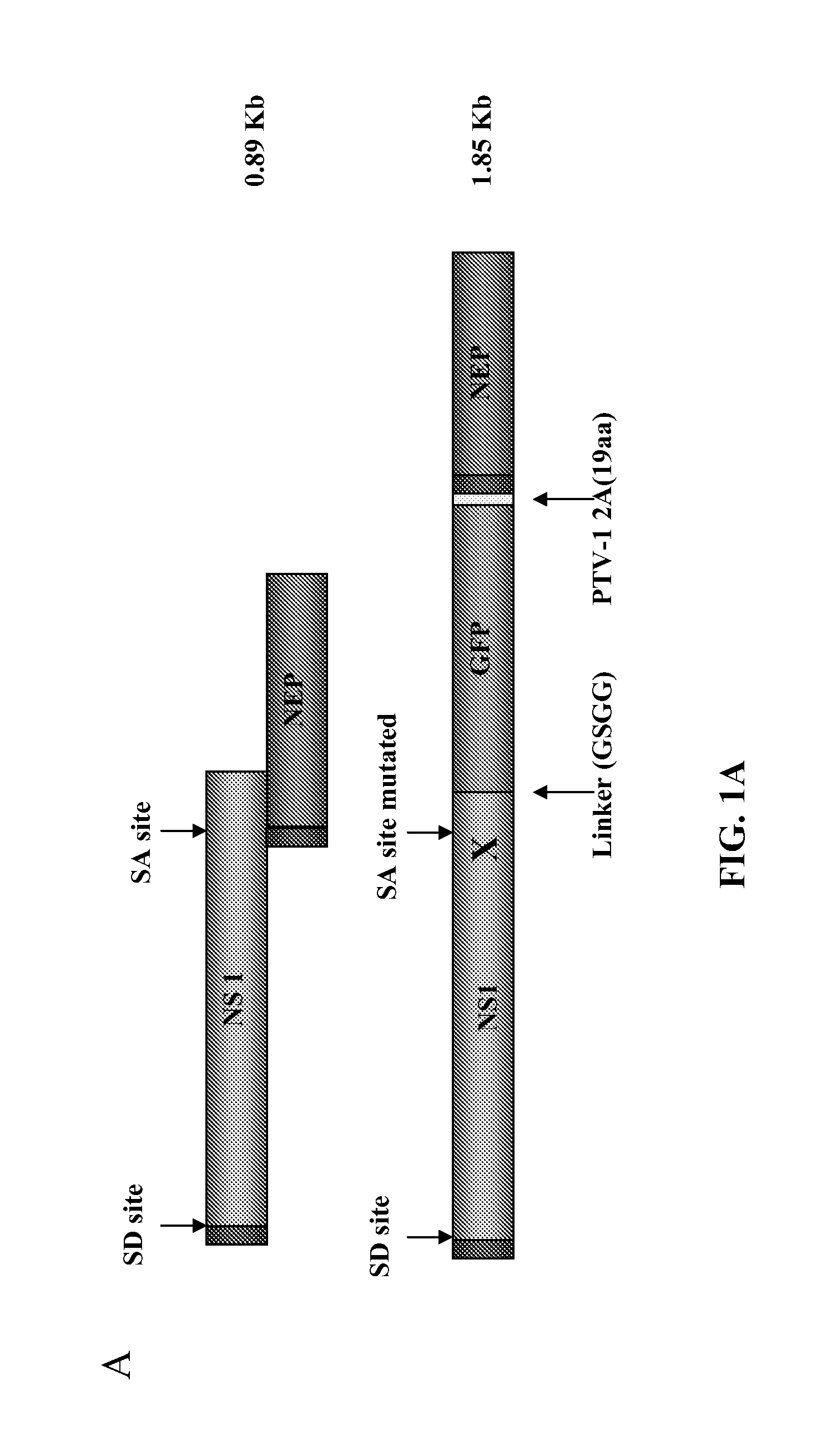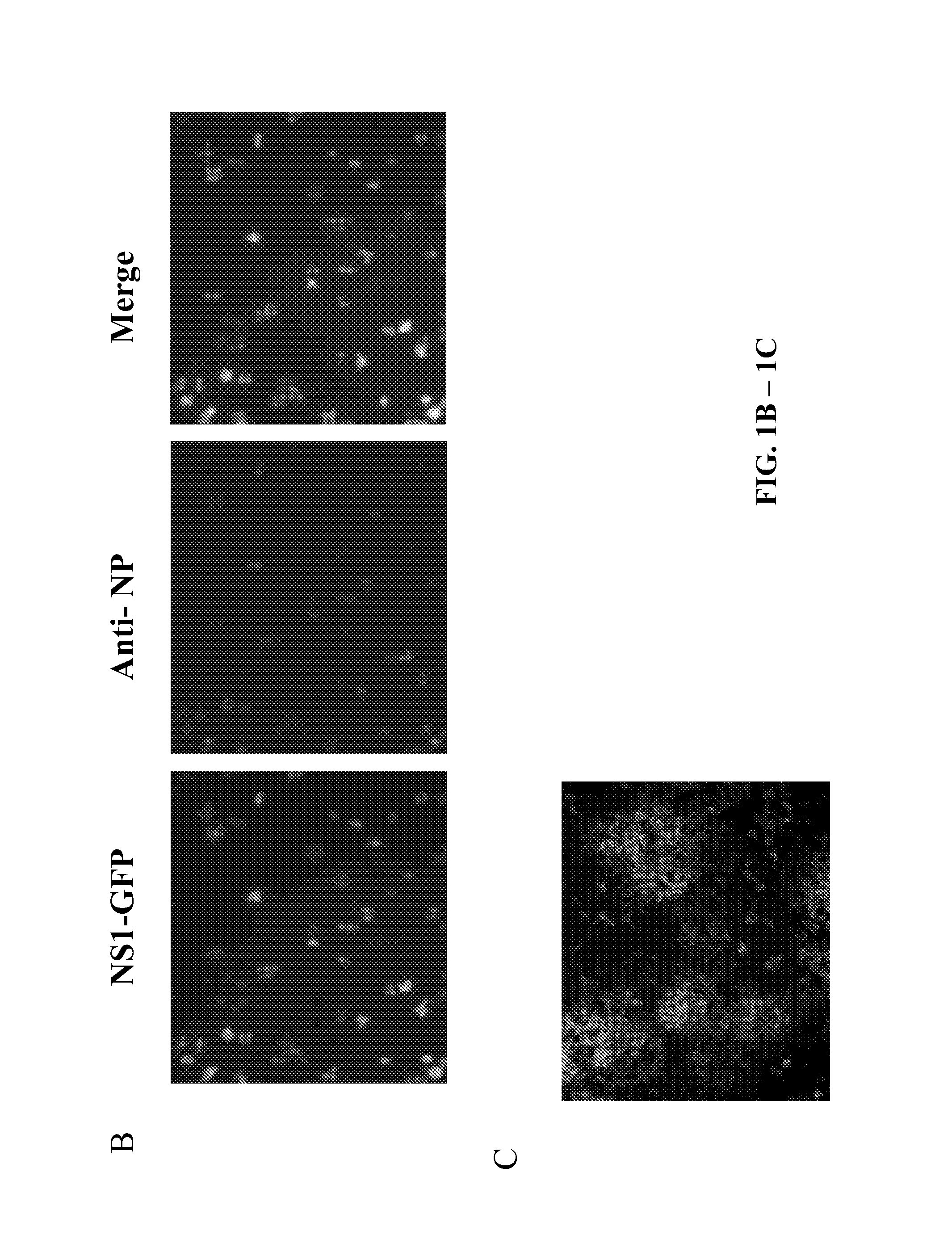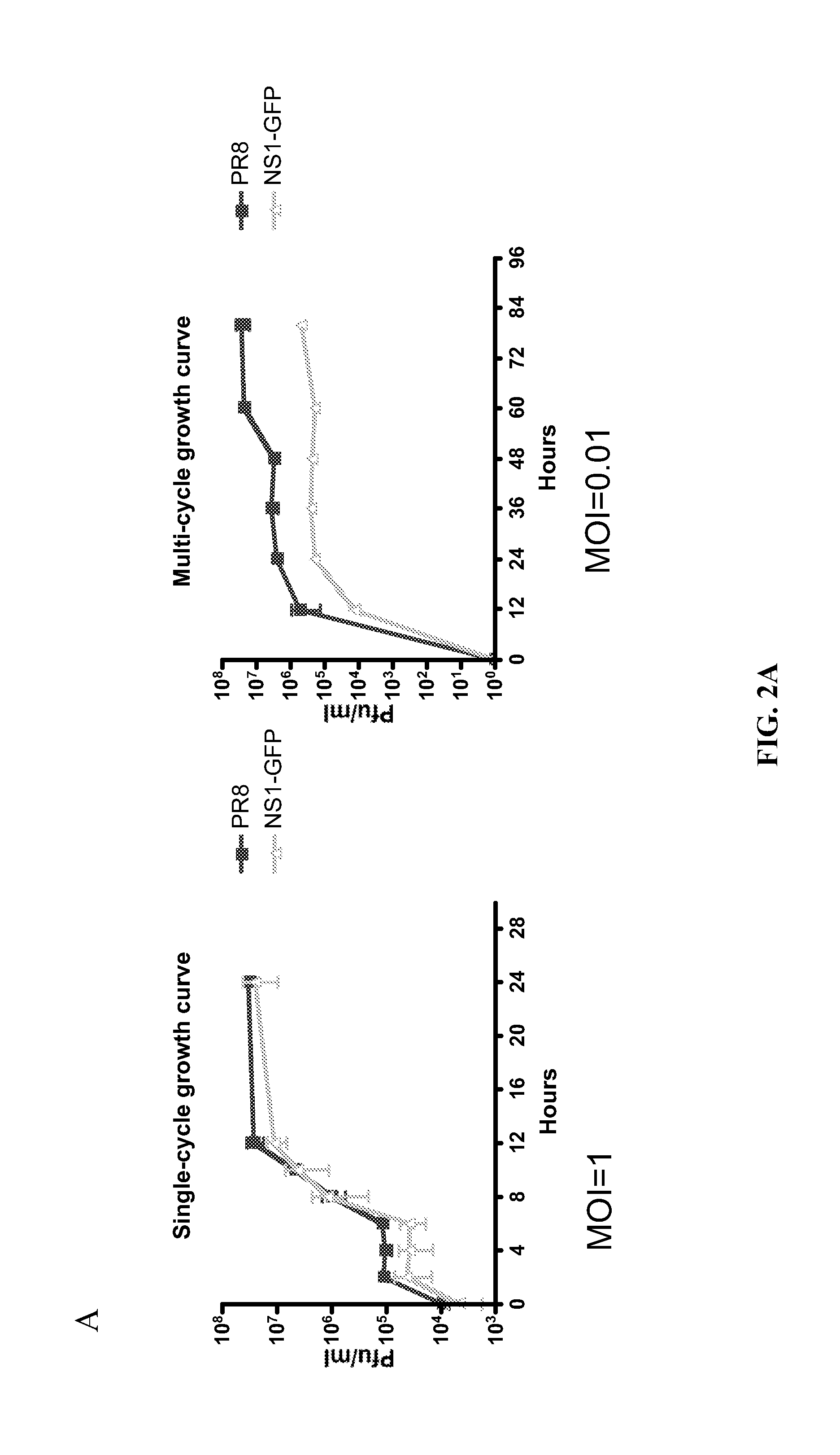Recombinant influenza viruses and uses thereof
a technology influenza viruses, applied in the field of recombinant influenza viruses, can solve the problems of putting an enormous burden on the healthcare system, reducing the titer or reducing the number of influenza viruses compared to untreated subjects, and reducing the severity of influenza viruses. , the effect of reducing the duration of a disease, preventing the progression of a disease, and reducing the severity
- Summary
- Abstract
- Description
- Claims
- Application Information
AI Technical Summary
Benefits of technology
Problems solved by technology
Method used
Image
Examples
example 2
7. EXAMPLE 2
Analysis of In Vivo Dynamics of Influenza Virus Infection Using a GFP Reporter Virus
7.1 Introduction
[0326]In this example, using reverse genetics, a recombinant influenza A virus (IAV) carrying a GFP reporter in the NS segment (NS1-GFP virus) was generated. This is the first demonstration of the successful generation of a mouse-lethal IAV expressing a fluorescent protein. Despite some attenuation, the NS1-GFP virus replicates efficiently in eggs, MDCK cells and in mouse lungs. The in vivo dynamics of IAV infection progression in mice was characterized and different cell types that are susceptible to influenza virus infection were identified. Whole organ imaging of NS1-GFP virus infected lungs was consistent with IAV infections starting in the respiratory tract near the trachea and main stem bronchi, spreading with time into bronchioles. Also, two well-known antivirals, amantadine and oseltamivir, which block virus uncoating and virus spreading, respectively, were tested....
PUM
| Property | Measurement | Unit |
|---|---|---|
| body weight | aaaaa | aaaaa |
| body weight | aaaaa | aaaaa |
| body weight | aaaaa | aaaaa |
Abstract
Description
Claims
Application Information
 Login to View More
Login to View More - R&D
- Intellectual Property
- Life Sciences
- Materials
- Tech Scout
- Unparalleled Data Quality
- Higher Quality Content
- 60% Fewer Hallucinations
Browse by: Latest US Patents, China's latest patents, Technical Efficacy Thesaurus, Application Domain, Technology Topic, Popular Technical Reports.
© 2025 PatSnap. All rights reserved.Legal|Privacy policy|Modern Slavery Act Transparency Statement|Sitemap|About US| Contact US: help@patsnap.com



